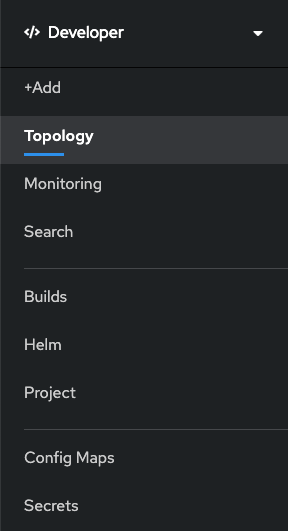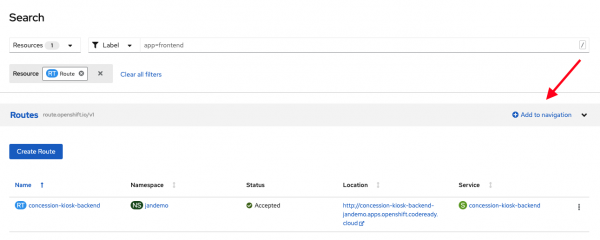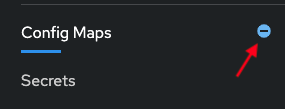The new Red Hat OpenShift 4.5 release includes a more streamlined and customizable navigation experience in the web console's Developer perspective. In this article, we quickly share the highlights of the new navigation features that we added based on user feedback.
A new navigation scheme for discoverability
To help with discoverability, we've moved to a flat navigation scheme that has three sections in the main navigation, as shown in Figure 1.

The first section of the navigation is task-based. In this section, you can use the +Add button to add new applications or components to your project. This section is further organized into three areas:
- Topology: View and interact with the applications in your project.
- Monitoring: Access project details, including a dashboard, metrics, and events.
- Search: Find project resources based on the resource type, label, or name.
The second section is object-based, with the options:
- Builds: Access builds, BuildConfigs, and pipelines.
- Helm: Access Helm releases.
- Project: Access information about the project.
The third section is a customizable area where you can add your most frequently used resources for quick access. We added this section based on feedback that many users were going to the Administrator perspective to access resources such as secrets and config maps. You can now access secrets and config maps in this section by default.
Customizable navigation
You can now use the Search page to find and add items to the navigation, as shown in Figure 2.

You can also remove items from the navigation by hovering over the menu item and clicking the blue circle with the minus (-) symbol, as shown in Figure 3.

Navigation improvements to the Developer perspective in the OpenShift 4.5 web console are based on user feedback. We hope the updates make it easier and quicker for you to interact with your projects.
Give us your feedback!
A huge part of the OpenShift developer experience process is receiving feedback and collaborating with our community and customers. We'd love to hear from you. We hope you will share your thoughts on the OpenShift 4.5 Developer Experience feedback page. You can also join our OpenShift Developer Experience Google Group to participate in discussions and learn about our Office Hours sessions, where you can collaborate with us and provide feedback about your experience using the OpenShift web console.
Get started with OpenShift 4.5
Are you ready to get started with the new OpenShift 4.5 web console? Try OpenShift 4.5 today.
Last updated: January 25, 2021